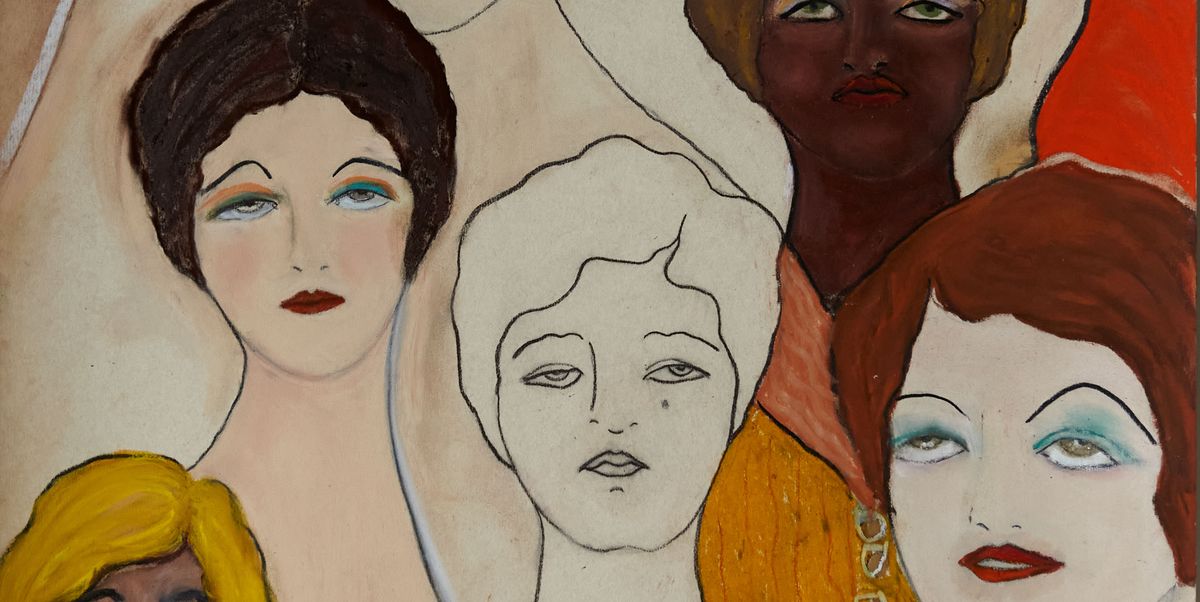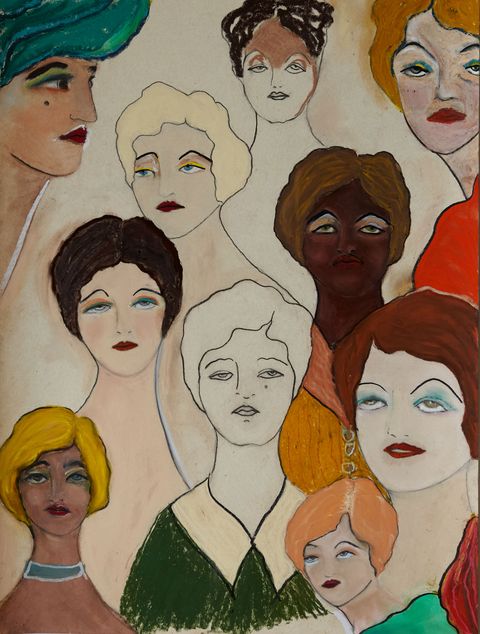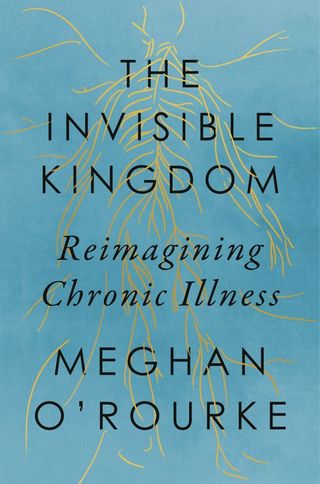To this day, I find it hard to tell the story of how I got sick. All I can say is that in my twenties and thirties, I got very ill very slowly. When I was 21, I began to experience strange neurological sensations, including vertigo when I walked up and down stairs. I had daily hives for a year. Then I began suffering from drenching night sweats. My doctors were reassuring. When I asked if something might be wrong with me, they reminded me that my labs looked mostly fine, even if I was always a little anemic, or had a few strange results here and there. Still, everyone had anomalies. I did work a lot. Maybe it was stress. No one believed I was ill—not even I did, exactly. I thought that perhaps I was sensitive or anxious.
When I was 35, my health took a striking downward turn in the months after a trip to Vietnam, during which a vivid rash appeared on my right arm. But it took a few years before I understood clearly that I was not only sick, I was living at the edge of medical knowledge. I had been intermittently unwell since I graduated from college in 1997, but my symptoms were now un-ignorable. I suffered from extraordinary levels of fatigue and brain fog so severe that at times I couldn’t walk around the block without collapsing afterward. (Words like fatigue do nothing to capture the severity of this experience.) But no one knew why. Trapped in a body that wasn’t working, I embarked on a complicated and obsessive quest for answers. I was met with both cutting skepticism and authentic concern from clinicians, friends, and colleagues. I tried many therapies and approaches toward healing during my search for an effective treatment, but in the meantime, the mysterious chronic illness I lived with got worse, not better, leaving me feeling almost entirely unrecognizable to myself.
We are all familiar with ubiquitous long-term illnesses like heart disease and cancer. They are well-defined and viewed as unquestionably “real” (even if much remains to be learned about them). But what is less well-known is that there is also a silent epidemic of chronic disorders that are often marginalized, contested, or even unrecognized—conditions that include autoimmune disease, myalgic encephalomyelitis/chronic fatigue syndrome (ME/CFS), post-treatment Lyme disease syndrome (chronic Lyme disease, as many patients call it), dysautonomia, mast cell activation syndrome, fibromyalgia, and now, on a scale that is only beginning to be recognized, long COVID. If every age has its representative signature disease, I contend that this type of chronic illness is ours.
When I got acutely sick in 2012, such conditions were poorly studied and rarely discussed—and often seen as manifestations of underlying mental illness. Marginalized patients who felt mysteriously unwell had to band together to try to legitimize their suffering. Close to a decade later, as I finished my book, The Invisible Kingdom, a year into the coronavirus pandemic, things had begun to look a bit different. Autoimmune disease is now a mainstream subject. Doctors are touting the importance of the microbiome and gut health, which not long ago was seen as a fringe idea. Most dramatically, the COVID-19 pandemic has given us a keen sense of how variable the human response to infection can be, vividly dramatizing the ways in which a virus or bacterium can collide with an individual’s biology to unleash a host of perplexing aftereffects in the body, often incited by the individual’s immune system. The scope of the problem of COVID-19 long-haulers has begun to bring more attention to these chronic syndromes.
Even so, many people still suffer in silence with poorly understood illnesses, and plenty of medical practitioners continue to dismiss patients like me, whose symptoms roam the body but who have what appear to be normal test results. Doctors once thought of multiple sclerosis as a form of hysteria. Tuberculosis was viewed as a disease that afflicted romantic young souls—until scientists discovered the bacterium that causes it. For decades, certain forms of cancer were thought to be a consequence of repressed emotions.
Today, we like to believe that we are rational about disease and immune to this kind of metaphorical thinking. But research shows that these views are still endemic in medicine, particularly when it comes to poorly understood illnesses, which are often seen as symptoms of a psychological problem. While advances in our understanding of mental illness constitute one of the great successes of 20th-century medicine, patients with immune-mediated illnesses confront an often reflexive categorization of their physical symptoms as mental ones—which presents a barrier to proper care and research. If medicine can’t see or name the problem, it can neither study nor treat it.
The medical uncertainty compounds patients’ own uncertainty. Because my unwellness did not take the form of a disease I understood, with a clear-cut list of symptoms and course of treatment, even I at times interpreted it as a series of signs about my very existence. Initially, the illness seemed to be a condition that signified something deeply wrong with me—illness as a kind of semaphore. Without answers, at my most desperate, I came to feel, in some unarticulated way, that if I could just tell the right story about what was happening, I could make myself better. If only I could figure out what the story was, like the child in a fantasy novel who must discover her secret name, I could become myself again.
It took years before I realized the illness was not just my own; the silence around suffering was our society’s pathology. Eventually, after many ups and downs, I was diagnosed with late-stage Lyme disease and hypermobile Ehlers-Danlos syndrome, one of a group of inherited connective tissue disorders that can cause pain, fatigue, and dysfunction within the autonomic nervous system. I am not “better” in the way I once hoped I would be, but having found the doctors who knew what to look for, and having undergone antibiotic treatment for Lyme disease, I’ve returned to the person I once was: someone who can find joy in her life, someone who has the energy to write books and play with her children. Chronic illness, I now know, leaves a wound in you, one that changes your sense of possibility of health itself, even as it may be invisible to those around you.
Excerpted from The Invisible Kingdom: Reimagining Chronic Illness. Copyright © 2022 by Meghan O’Rourke. Reprinted here with permission from Riverhead Books.
This article appears in the March 2022 issue of ELLE.



